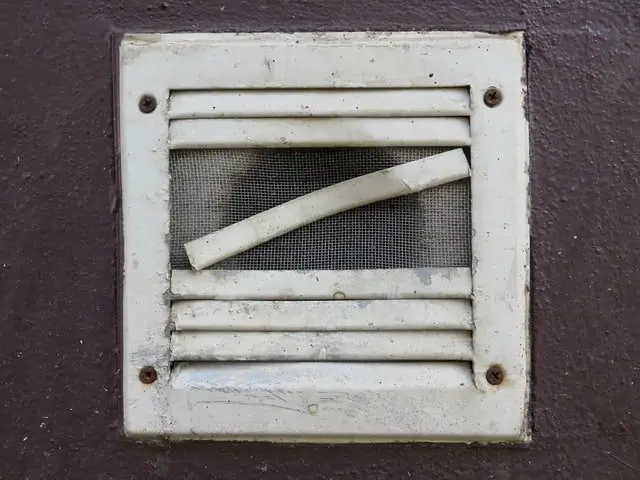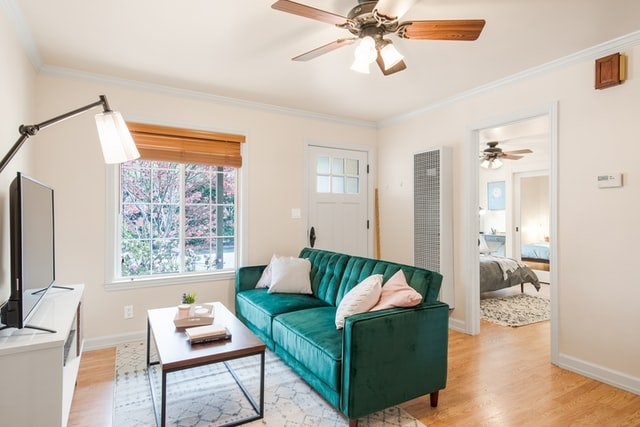Indoor air quality can be up to five times worse than the outdoor air, according to the US Environmental Protection Agency. Fortunately, the solution is quite simple. Provide continuous good ventilation in your home.
So let’s take a look at what you can do to improve your ventilation!
To improve the ventilation in your home, cleaning or replacing ventilation filters is the first important step. Other means of improving ventilation are installing more ventilation vents or an additional exhaust fan. Another option is to improve the airflow in your house.
Why ventilation is so important
Indoor air quality is often much worse than the outdoor air. And air pollution can cause a multitude of health effects, both in the short and the long term. Continuous ventilation is key in reducing air pollution and providing fresh air.
The potential health effects of poor indoor air quality include irritation of the eyes, nose, and throat, headaches, and fatigue. You can read all about the symptoms of poor air quality in my article here.
Common indoor air pollutants include radon gas, CO2, carbon monoxide, and VOCs. You can read all about them in my article: The complete indoor air quality guide for your home.

Measures to improve ventilation
To improve ventilation, you need to make sure your current ventilation system is funtioning optimally. Additionally, you can install extra ventilation and improve indoor airflow.
The condition of your ventilation system
Ventilation in buildings is often poor and not all houses have a ventilation system installed. If you do not have a ventilation system, I would strongly recommend that you consider installing one.
Even if you do not have a specific ventilation system installed, you likely have some vents and ventilation grilles. Additionally, you might have an exhaust fan in the bathroom and an extractor hood in the kitchen.
First of all, make sure you turn on the exhaust fan every time you take a shower or a bath. And when you are cooking, make sure the extractor hood is at the highest setting.
It is very important to clean and maintain your ventilation system and vents often. A general rule is to clean them every three months and replace filters twice a year.
This highly depends on if you have pets that shed hairs and dander, if you have allergies, or are sensitive to air pollutants. In that case, you should clean and replace your filters more often.
Install additional ventilation equipment
If you lack sufficient ventilation I highly recommend investing in additional ventilation equipment. For example, if you lack an exhaust fan in your bathroom, you should strongly consider installing one. The bathroom is especially susceptible to mold growth, which is a health hazard due to their release of spores into the air.
Another option would be to see if you can install more vents and ventilation grilles. They are a great alternative to opening your windows. This allows you to increase ventilation while having a better barrier against insects and larger airborne particles such as plant seeds and leaves.
How to improve airflow to increase ventilation
In order to aid your home’s ventilation, you can try to improve the airflow in your house. First of all, make sure to always open some windows, just a little bit already greatly improves airflow. Windows can often be locked while being slightly ajar, perfect!
Another option is to make sure your internal doors are always open. This makes sure that indoor airflow can easily go from one room to the other. Additionally, doors should have about 1.5 cm (0.6 inch) of space between the floor and the bottom of the door. This ensures that the airflow is not blocked by closed doors. So if you have a door snake or something similar, consider removing them.
Another option to increase airflow is to install a ceiling fan. A ceiling fan even has the additional benefit of distributing heated air coming from your central heating system. Hereby, a ceiling fan saves on your energy bill as the room heats up faster.

Insulation can stop ventilation
Old houses were often built with lots of natural ventilation. Which is great, but they also came with rather poor insulation. At present, however, people tend to insulate their homes to reduce their energy bills and improve thermal comfort.
Unfortunately, when installing new insulation, natural ventilation goes down. So if you live in a relatively old house that has new insulation, you need to make sure your ventilation system is adequate.
An issue with continuous good ventilation is the potential for significant heat loss. Luckily, there are many heat-recovery ventilation options available.
Ventilation without heat loss
If you are considering improving or replacing your ventilation system or vents, you should consider heat-recovery ventilation. You can read all about heat-recovery ventilation in my article here.

